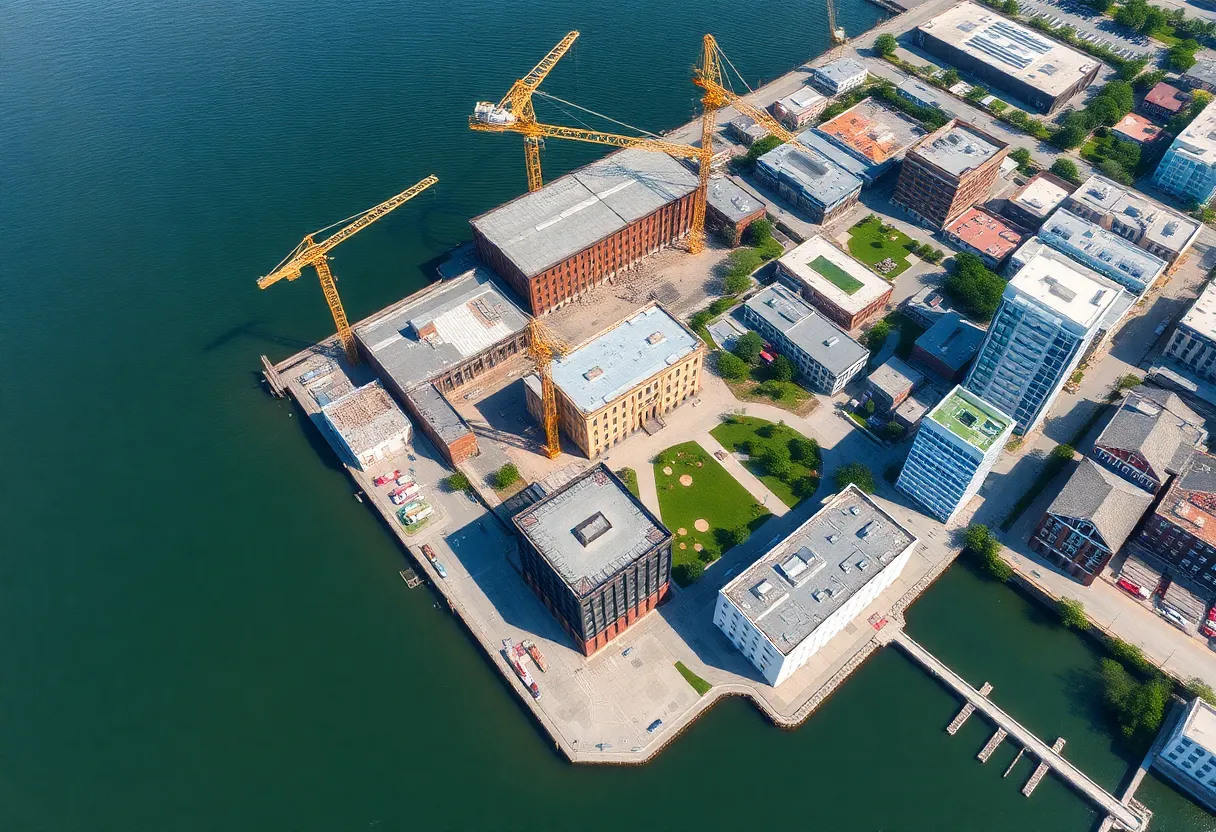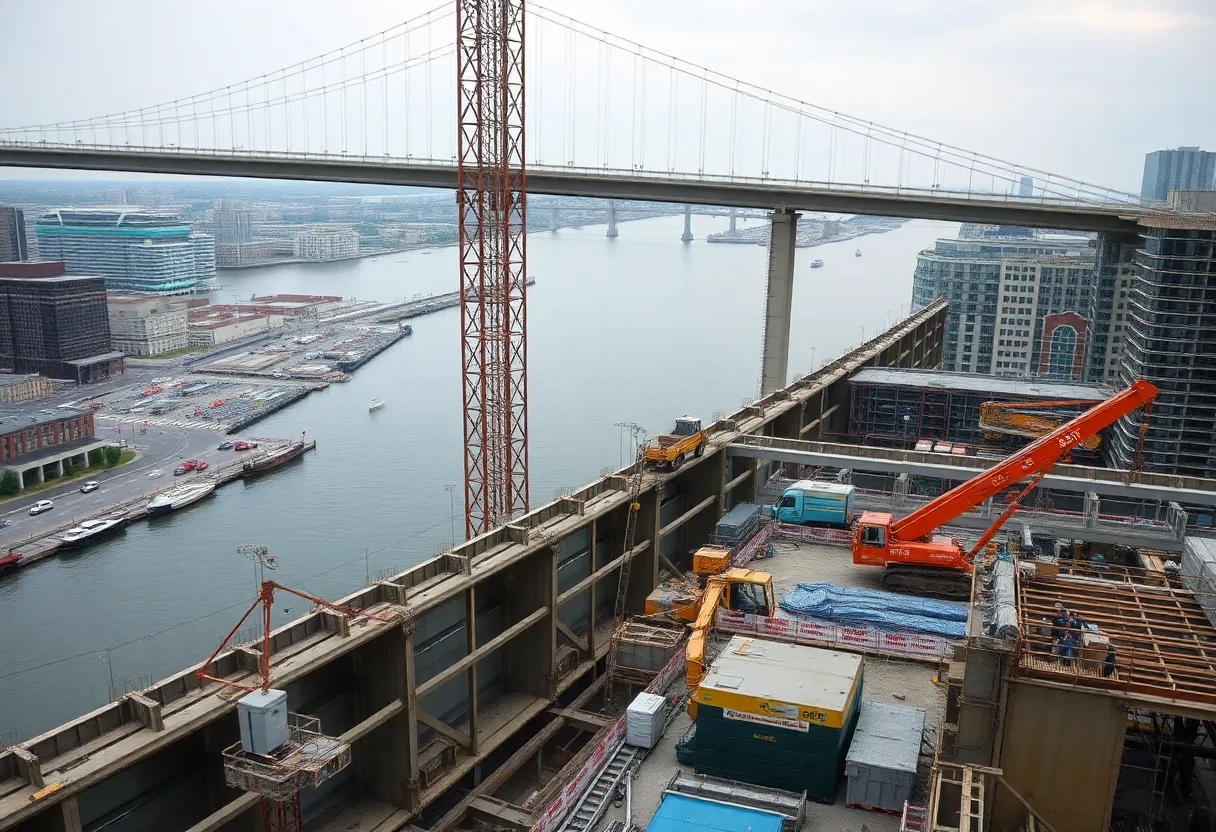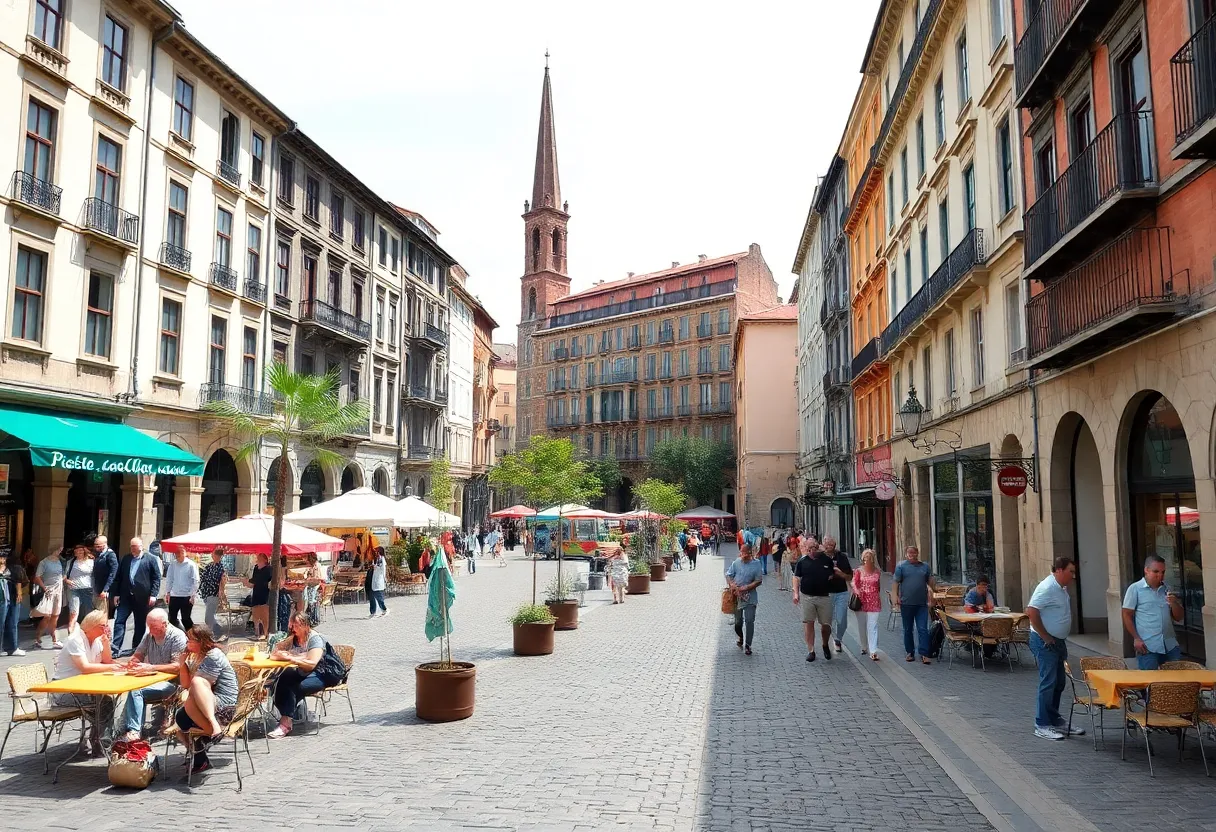News Summary
Demolition has commenced in Charleston, South Carolina, to pave the way for an $80 million mixed-use waterfront development. This large-scale project aims to transform an outdated warehouse district into a vibrant community hub featuring residential units, retail spaces, and a public park. The development emphasizes sustainability through hurricane-resistant designs and active community engagement, ensuring minimal disruption during construction. With plans to create 300 permanent jobs, this initiative highlights a commitment to economic growth while addressing environmental and community needs.
Demolition Starts in Charleston for Waterfront Development
In Charleston, South Carolina, demolition work began on an outdated warehouse district on October 21, 2025, to clear the way for a major mixed-use waterfront development. This $80 million project aims to transform the area with new residential units, retail spaces, and a public park, addressing local needs for modern urban spaces.
The initiative focuses on creating a sustainable and resilient community hub. Key elements include hurricane-resistant designs such as elevated foundations and flood-resistant materials, which draw from past storm experiences to ensure long-term durability.
Project Overview and Features
The development plan outlines a comprehensive approach to urban renewal. It incorporates residential units for housing, retail spaces for commercial activity, and a public park to enhance recreational opportunities. Environmental assessments have been conducted to minimize impact on nearby wetlands, promoting ecological balance.
Developers have committed to generating 300 permanent positions after construction, which could boost the local economy. To address potential disruptions, community meetings discussed noise complaints, leading to a phased demolition schedule that aims to reduce inconvenience for residents and businesses.
Environmental and Community Considerations
Efforts to protect the environment are central to the project. Thorough environmental assessments ensure that the development has minimal impact on nearby wetlands, preserving local ecosystems. The hurricane-resistant features, including elevated foundations and flood-resistant materials, reflect lessons learned from previous storms in the region.
Community involvement has been a priority. Through meetings, concerns such as noise were addressed by implementing a phased demolition process, allowing for better management of construction activities and minimizing disruptions.
Broader Context and Implications
This redevelopment aligns with ongoing coastal adaptation efforts in the Carolinas. The project draws inspiration from national infrastructure reports, emphasizing strategies for climate resilience and sustainable growth. By integrating these elements, the development not only revitalizes the waterfront but also sets a model for future projects in vulnerable coastal areas.
The $80 million investment represents a significant step in modernizing Charleston’s infrastructure. This initiative could serve as a blueprint for similar endeavors, highlighting the importance of balancing economic development with environmental stewardship and community needs.
Overall, the project underscores a commitment to creating livable spaces that withstand environmental challenges while fostering economic opportunities. The combination of residential, retail, and recreational features aims to enhance the quality of life for Charleston residents.
The phased approach to demolition ensures that the project progresses efficiently without overwhelming local resources. By promising 300 permanent positions, the development contributes to job creation and economic stability in the area.
Incorporating hurricane-resistant designs reflects a proactive response to climate risks, making the new development more adaptable to future weather events. This focus on sustainability and resilience is part of larger efforts in the Carolinas to adapt to coastal challenges.
Through environmental assessments and community engagement, the project demonstrates a holistic approach to urban development. This ensures that the transformation of the warehouse district benefits both the environment and the community.
As the project moves forward, it highlights the role of infrastructure in building more resilient communities. The inspiration from national reports reinforces the need for innovative solutions in coastal regions.
The detailed planning and execution of this development illustrate how such projects can integrate multiple aspects, from economic growth to environmental protection.
By addressing key issues upfront, such as noise and ecological impact, the project sets a positive example for future initiatives.
The commitment to permanent jobs and sustainable designs positions this development as a forward-thinking endeavor in Charleston’s history.
In conclusion, this waterfront project in Charleston represents a vital step in urban renewal, combining modern features with essential safeguards.
Expanding on the environmental focus, assessments have been crucial in maintaining the integrity of nearby wetlands, ensuring that development does not compromise natural habitats.
The inclusion of public input through meetings has helped shape the project, making it more responsive to local concerns.
This holistic strategy not only advances physical infrastructure but also strengthens community ties and economic prospects.
With these elements in place, the project is poised to deliver lasting benefits for Charleston and its residents.
FAQ Section
Frequently Asked Questions
- What is the main focus of the project in Charleston, South Carolina?
- The project involves demolition work on an outdated warehouse district to make way for a mixed-use waterfront development.
- When did the demolition work commence?
- Demolition work commenced on October 21, 2025.
- What are the key components of the $80 million project?
- The $80 million project includes residential units, retail spaces, and a public park.
- What features ensure the development is hurricane-resistant?
- Hurricane-resistant designs feature elevated foundations and flood-resistant materials, reflecting lessons from past storms.
- How does the project address environmental concerns?
- Environmental assessments ensure minimal impact on nearby wetlands.
- What job opportunities does the project promise?
- Developers promise 300 permanent positions post-construction.
- How are community concerns being handled?
- Community meetings addressed noise complaints, with phased demolition to minimize inconvenience.
- How does this project fit into larger efforts?
- This redevelopment aligns with Carolinas’ coastal adaptation efforts, drawing inspiration from national infrastructure reports.
Key Features Chart
| Feature | Description |
|---|---|
| Residential Units | Included in the $80 million project to provide housing options. |
| Retail Spaces | Part of the development to support commercial activities. |
| Public Park | Enhances recreational areas for community use. |
| Hurricane-Resistant Designs | Feature elevated foundations and flood-resistant materials. |
| Environmental Assessments | Ensure minimal impact on nearby wetlands. |
| Job Creation | Promises 300 permanent positions post-construction. |
| Phased Demolition | Addresses noise complaints and minimizes inconvenience. |





